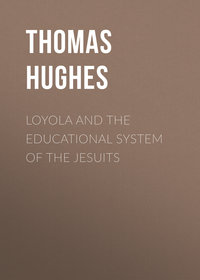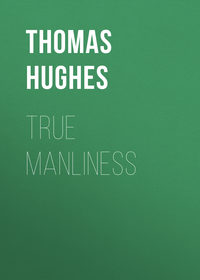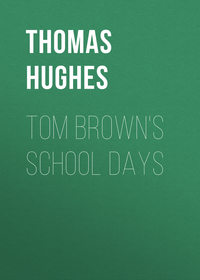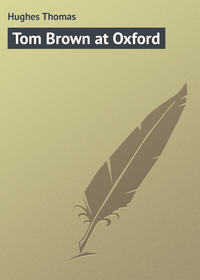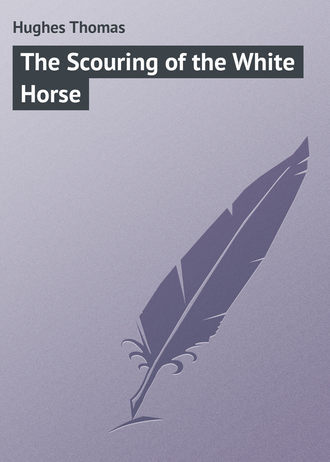 полная версия
полная версияThe Scouring of the White Horse
Ashamstead, situate five miles to the southeast of Ilsley, is named by the Lysons in their topographical account of Berkshire as the probable site of the battle, but they give no reasons, and are unsupported by tradition or remains.
Aston has a stronger case. It is situate between Wallingford and Ilsley. The range of chalk hills rises just above it, and one detached hill is here thrown out into the vale, on which are still visible considerable earthworks. There is a chapel called Thorn Chapel on the eastern slope of this hill, and I am told there is a tradition that this chapel was built on the spot where some Saxon king heard mass on the morning of a battle. It is suggested by Mr. Lousley and others, that the Saxons occupied this outlying hill, the Danes the opposite range; and that the battle was fought in the valley between, where, when the road was recently altered, a number of bones were found, apparently thrown in together without care, as would be the case after a battle. There are, however, no regular barrows or other remains. Bishop Gibson is in favour of this spot, on account, as it would seem, of a passage in the Saxon Chronicle for the year 1006, which runs as follows: “They” (the Danes) “destroyed Wallingford, and passed a night at Cholsey.” Then they “turned along Ashdown to Cwichelmes Low.”
The bishop says, that Cwichelmes Low (the low or hill of King Cwichelm, who reigned in these parts, and died in the year 636 A.D.) is Cuckhamsley Hill, or Scuchamore Knob, as it is generally called; a high hill in the same chalk range, about ten miles east of White Horse Hill; and he argues that, as the Danes went from Wallingford, by Ashdown, to Cwichelmes Low, we must look for Ashdown between Wallingford and Cuckhamsley Hill. Now Aston lies directly between the two, therefore Aston is Ashdown, and the site of the battle. But the place now called Ashdown is on the further side of Cuckhamsley Hill from Wallingford – therefore the Danes could not have passed it in getting from Wallingford to Cuckhamsley Hill – therefore the modern Ashdown cannot be the site of the battle.
To this I answer, First, the Bishop assumes that Cwichelmes Low is Cuckhamsley Hill, without giving any reason.
Secondly, assuming Cwichelmes Low and Cuckhamsley Hill to be identical; yet, as Ashdown was clearly a large tract of country, the Danes might go from Wallingford, along a part of it, to Cwichelmes Low without passing the battle-field.
Thirdly, the name Aston is written “Estone” in Domesday Book; meaning “East town,” or enclosure, and not “Mons fraxini,” the “Hill of the Ash-tree.”
Fourthly, Æthelred and Alfred would have kept to the hills in their retreat, and never have allowed the Danes to push them out into the Thames-valley, where the Pagan cavalry would have been invaluable; but this must have been the case, if we suppose Aston to be the site of the battle. Lastly, all the above sites are too near to Reading, the farthest being only sixteen miles from that town. But Æthelred and Alfred had been retreating three days, and would therefore much more probably be found at Ashdown by White Horse Hill, which is ten miles farther along the range of hills.
Ashdown, the remaining site, and the one which I believe to be the true one, is the down which surrounds White Horse Hill, in the parish of Uffington. On the highest point of the hill, which is 893 feet above the level of the sea, stands Uffington Castle, a plain of more than eight acres in extent, surrounded by earthworks, and a single deep ditch, which Camden, and other high authorities, say are Danish.
There is another camp, with earthworks, called Hardwell Camp, about a mile W.N.W. of Uffington Castle, and a third smaller circular camp, called King Alfred’s camp, about a mile to the S.W., which may still be made out, close to the wall of Ashdown Park, Lord Craven’s seat, although Aubrey says, that in his time the works were “almost quite defaced, by digging for the Sarsden stones to build my Lord Craven’s house in the Park.” Wise suggests that the Danes held Uffington Castle; that Æthelred was in Hardwell-camp, and Alfred in Alfred’s camp. A mile and a half to the eastward, in which direction the battle must have rolled, as the Saxons slowly gained the day, is a place called the Seven Barrows, where are seven circular burial-mounds, and several other large irregularly-shaped mounds, full of bones; the light soil which covers the chalk is actually black around them. The site agrees in all points with the description in the chroniclers; it is the proper distance from Reading; the name is the one used by the chroniclers, – “Ash-down,” “Mons Fraxini,” “Æscendun;” it is likely that Æthelred would have fought somewhere hereabouts to protect Wantage, a royal burg, and his birthplace, which would have been otherwise at the mercy of the enemy; and lastly, there – and not at Cuckhamsley Hill, or elsewhere – is carved the White Horse, which has been from time immemorial held to be a monument of the great victory of Ashdown. For the above reasons, I think we are justified in claiming this as the site of the battle.
Note IVWAYLAND SMITH’S CAVEWise (see p. 35) says he thinks he has discovered the place of burial of King Basreg, Bagseeg (or whatever his name might be, for it is given in seven or eight different ways in the chroniclers), in Wayland Smith’s cave, which place he describes as follows: —
“The place is distinguished by a parcel of stones set on edge, and enclosing a piece of ground raised a few feet above the common level, which every one knows was the custom of the Danes, as well as of some other northern nations. And Wormius observes, that if any Danish chief was slain in a foreign country, they took care to bury him as pompously as if he had died in his own. Mr. Aubrey’s account of it is this: ‘About a mile [or less] from the Hill [White Horse Hill] there are a great many large stones, which, though very confused, must yet be laid there on purpose. Some of them are placed edgewise, but the rest are so disorderly that one would imagine they were tumbled out of a cart.’ The disorder which Mr. Aubrey speaks of is occasioned by the people having thrown down some of the stones (for they all seem originally to have been set on edge), and broken them to pieces to mend their highways. Those that are left enclose a piece of ground of an irregular figure at present, but which formerly might have been an oblong square, extending only north and south.
“On the east side of the southern extremity stand three squarish flat stones of about four or five feet over each way, set on edge, and supporting a fourth of much larger dimensions, lying flat upon them. These altogether form a cavern or sheltering-place, resembling pretty exactly those described by Wormius, Bartholine, and others, except in the dimensions of the stones; for whereas this may shelter only ten or a dozen sheep from a storm, Wormius mentions one in Denmark that would shelter a hundred.
“I know of no other monument of this sort in England; but in Wales and the Isle of Anglesey there are several not unlike it, called by the natives Cromlechs. The Isle of Anglesey having been the chief seat of the Druids, induced its learned antiquary to ascribe them to the ancient Britons; an assertion that I will not take upon me to contradict, but shall only at this time observe, that I find sufficient authorities to convince me that ours must be Danish.
“Whether this remarkable piece of antiquity ever bore the name of the person here buried is not now to be learned, the true meaning of it being long since lost in ignorance and fable. All the account which the country people are able to give of it is, ‘At this place lived formerly an invisible smith; and if a traveller’s horse had lost a shoe upon the road, he had no more to do than to bring the horse to this place, with a piece of money, and leaving both there for some little time, he might come again and find the money gone, but the horse new shod.’ The stones standing upon the Rudgeway, as it is called (which was the situation that they chose for burial monuments), I suppose gave occasion to the whole being called Wayland Smith, which is the name it was always known by to the country people.
“An English antiquary might find business enough who should attempt to unriddle all the fabulous traditions of the vulgar, which ascribe these works of unknown antiquity to demons and invisible powers.
“Leaving, therefore, the story of the invisible smith to be discussed by those who have more leisure, I only remark, that these stones are, according to the best Danish antiquaries, a burial altar; that their being raised in the midst of a plain field, near the great road, seems to indicate some person there slain and buried, and that this person was probably a chief or king; there being no monument of this sort near that place, perhaps not in England, beside.” (See pp. 35, 36, 37.)
I have given Wise’s statement of his own case, but the better opinion amongst antiquaries seems to be that he is wrong, and that the cromlech, called Wayland Smith’s Cave, is of much earlier date than 871 A.D.
I insert here the note from Kenilworth (note B, p. 218) in which Sir Walter Scott mentions Wayland Smith’s Cave: —
“The great defeat given by Alfred to the Danish invaders, is said by Mr. Gough to have taken place near Ashdown in Berkshire. The burial-place of Bœreg, the Danish chief who was slain in this fight, is distinguished by a parcel of stones, less than a mile from the hill, set on edge, enclosing a piece of ground somewhat raised. On the east side of the southern extremity, stand three squarish flat stones, of about four or five feet over either way, supporting a fourth, and now called by the vulgar Wayland Smith, from an idle tradition about an invisible smith replacing lost horseshoes there.” (Gough’s edition of Camden’s Britannica. Vol. I. p. 221.)
“The popular belief still retains memory of this wild legend, which, connected as it is with the site of a Danish sepulchre, may have arisen from some legend concerning the northern Duergar, who resided in the rocks, and were cunning workers in steel and iron. It was believed that Wayland Smith’s fee was sixpence, and that, unlike other workmen, he was offended if more was offered. Of late his offices have been again called to memory; but fiction has in this, as in other cases, taken the liberty to pillage the stores of oral tradition. This monument must be very ancient, for it has been kindly pointed out to me that it is referred to in an ancient Saxon charter as a landmark. The monument has been of late cleared out, and made considerably more conspicuous.”
It will be seen from this that Sir Walter assumes the view of Wise to be correct, but he never saw the place.
Note VAs an illustration of one of the methods by which traditions are kept up in the country, I insert some verses written by Job Cork, an Uffington man of two generations back, who was a shepherd on White Horse Hill for fifty years.
“It was early one summer’s morn,The weather fine and very warm,A stranger to White Horse Hill did goTo view the plains and fields below.“As he along the hill did ride,Taking a view on every side,The which he did so much enjoyTill a shepherd’s dog did him annoy.“At length an aged man appeared,A watching of his fleecy herd,With threadbare coat and downcast eye,To which the stranger did draw nigh.“‘O noble shepherd, can you tellHow long you kept sheep on this hill?’‘Zeven yeur in Zundays I have beenA shepherd on this hill so green.’“‘That is a long time, I must own,You have kept sheep upon this down;I think that you must have been toldOf things that have been done of old.’“‘Ah, Zur, I can remember wellThe stories the old voke do tell —Upon this hill which here is seenMany a battle there have been.“‘If it is true as I heard zay,King Gaarge did here the dragon slay,And down below on yonder hillThey buried him as I heard tell.“‘If you along the Rudgeway go,About a mile for aught I know,There Wayland’s Cave then you may seeSurrounded by a group of trees.“‘They say that in this cave did dwellA smith that was invisible;At last he was found out, they say,He blew up the place and vlod away.“‘To Devonshire then he did go,Full of sorrow, grief, and woe,Never to return again,So here I’ll add the shepherd’s name —“Job Cork.’”There is no merit in the lines beyond quaintness; but they are written in the sort of jingle which the poor remember; they have lived for fifty years and more, and will probably, in quiet corners of the Vale, outlive the productions of much more celebrated versemakers than Job Cork, though probably they were never reduced into writing until written out at my request.
Job Cork was a village humorist, and stories are still told of his sayings, some of which have a good deal of fun in them; I give one example in the exact words in which it was told to me: —
“One night as Job Cork came off the downs, drough-wet to his very skin, it happened his wife had been a baking. So, when he went to bed, his wife took his leather breeches, and put ’em in the oven to dry ’em. When he woke in the morning he began to feel about for his thengs, and he called out, and zed, ‘Betty, where be mee thengs?’ ‘In the oven,’ zed his wife. Zo he looked in the oven and found his leather breeches all cockled up together like a piece of parchment, and he bawled out, ‘O Lard! O Lard! what be I to do? Was ever man plagued as I be?’ ‘Patience, Job, patience, Job,’ zed his wife; ‘remember thy old namesake, how he was plagued.’ ‘Ah!’ zed the old man, ‘’a was plagued surely; but his wife never baked his breeches.’”
Other shepherds of the Hill have been poets in a rough sort of way. I add one of their home-made songs, as I am anxious to uphold the credit of my countrymen as a tuneful race.
“Come, all you shepherds as minds for to be,You must have a gallant heart,You must not be down-hearted,You must a-bear the smart;You must a-bear the smart, my boys,Let it hail or rain or snow,For there is no ale to be had on the HillWhere the wintry wind doth blow.“When I kept sheep on White Horse HillMy heart began to ache,My old ewes all hung down their heads,And my lambs began to bleat.Then I cheered up with courage bold,And over the Hill did go,For there is no ale to be had on the HillWhen the wintry wind doth blow.“I drive my sheep into the fold,To keep them safe all night,For drinking of good ale, my boys,It is my heart’s delight.I drove my sheep into the fold,And homeward I did go,For there is no ale to be had on the HillWhen the wintry wind doth blow.“We shepherds are the liveliest ladsAs ever trod English ground,If we drops into an ale-houseWe values not a crownd.We values not a crownd, my boys,We’ll pay before we go,For there is no ale to be had on the HillWhen the wintry wind doth blow.”THE END1
Doyle.
2
E. Martin Atkins, Esq., of Kingston Lisle, has lately been opening the barrows which are nearest to the Horse; and the compiler, hearing that he was about to examine Dragon’s Hill also, wrote to him on the subject, and suggested how desirable it would be (if any ways possible) to find the remains of King Bægseek there who was slain at Ashdown. To which communication the compiler received the following reply. After mentioning the contents of the other barrows, some clearly Saxon, others Romano-British, his letter proceeds as to Dragon’s Hill: —
“As for old Bægseek, I should chuck him overboard at once, and assume that our friend Uter Pendragon’s remains had been originally deposited here, but that he had been disturbed in his repose by the decapitation of the barrow, which at some unknown time has undoubtedly taken place. It is unfortunate, however, that a Roman coin of the time of Constans turned up from among the débris, and the fragments of pottery also were chiefly of Roman manufacture, mixed with some of earlier date. It will therefore perhaps be difficult to reconcile these matters one with the other; but on turning them over in your mind, you will, I dare say, theorize with a very agreeable correctness!” What is a wretched compiler to do, who gets such letters from those who should be his aiders and abettors?
3
See Simeon, A.D. 870.
4
See Chronicle of St. Neot, A.D. 878.
5
See Saxon Chron. and Asser, A.D. 866.
6
See Asser, A.D. 867.
7
See Saxon Chron. and Huntingdon, A.D. 874.
8
See Simeon, A.D. 870.
9
N. B. This was written in October, 1857.
10
Here is Robert of Gloster’s account of the martyrdom: —
“So that atte laste to Estangle agen hym come:
Ther hii barned and robbede and that fole to grounde slowe;
And as wolves among ssep reulych hem to drowe,
Seynt Edmond was tho her kyng, and tho he sey that delvol cas
That me morthred so that fole, and non amendement n’as,
He ches levere to deye hym-sulf, that such soreve to ysey —
He dude hym vorth among ys ton, n’olde he nothyng fle.
Hii nome hym and scourged hym, and suthe naked hym bounde
To a tre, and to hym ssote, and made hym mony a wounde,
That the arewe were on hym tho thycke, that no stede n’as byleved.
Atte laste hii martred hym, and smyte of ys heved.”
Robert of Gloster’s Chronicle, p. 263, apud Thomas Hearne. Ed. 1724.
11
See Saxon Chronicle, and Huntingdon, A.D. 870.
12
See Brompton, A.D. 870.
13
See Sax Chron., A.D. 870.
14
See Huntingdon, A.D. 871.
15
See Simeon, A.D. 871.
16
See Saxon Chronicle, A.D. 871.
17
See Asser, A.D. 871.
18
This is Robert of Gloster’s account of the Battle: —
“The Kyng and Alfred ys brother nome men ynowe,
Mette hem, and a batayle smyte up Assesdowne —
Ther was mony moder chyld, that sone lay ther doune —
The batayle ylaste vorte-nygt, and ther were aslawe
Vyf dukes of Dene-march, ar hii wolde wyth drawe,
And mony thousende of other men, and tho’ gonne hii to fle;
Ac hii adde alle ybe assend, gyf the nyght n’adde y bee.
Robert of Gloster, p. 263, apud Thomas Hearne. Ed. 1724.”
19
Wise’s Letter to Dr. Mead, “concerning some Antiquities in Berkshire,” ed. 1, pp. 25, 26.
20
Wise’s Letter, p. 31.
21
“Caddle” – to worry: from cād, strife. – The Berkshire scholiast suggests that the modern “cad,” having regard to the peculiarities of the class, must be the same word.
22
“Wosbird,” bird of woe, of evil omen.
23
“Dummell,” dull, stupid.
24
“Fogger” – quasi fodderer – he who giveth fodder to the cattle – generally used for the farmer’s head man.
25
“Sprack,” – sprightly.
26
“Draw cuts,” – to draw lots.
27
This hand-bill was kindly given me by H. Godwin, Esq., of Newbury.
28
“Warn,” – contraction of the word “warrant.”
29
“Scawt” – to get up.
30
“File” – a fall.
31
“Sinkers” – stockings without feet.
32
“Cham” – “I am,” a form still used in parts of Somersetshire.
33
“Oo’lt” – wilt thou.
34
“Cluttery” – pelting with rain.
35
“Vorights” – opposite.
36
“Spend” – to consume.
37
“Scrow” – angry.
38
“Purly” – purblind.
39
“Stabble” – to tread dirt about.


